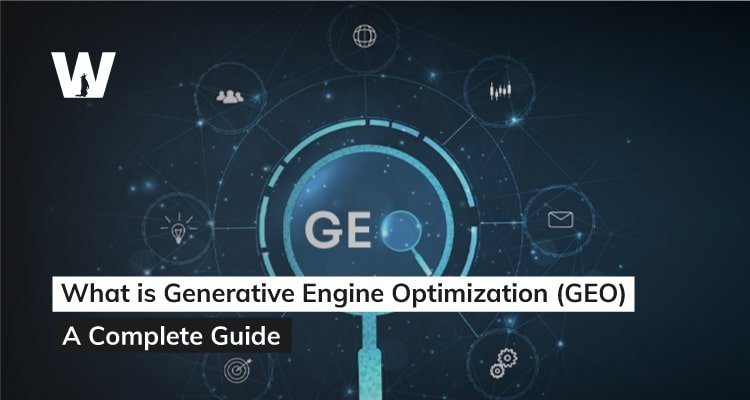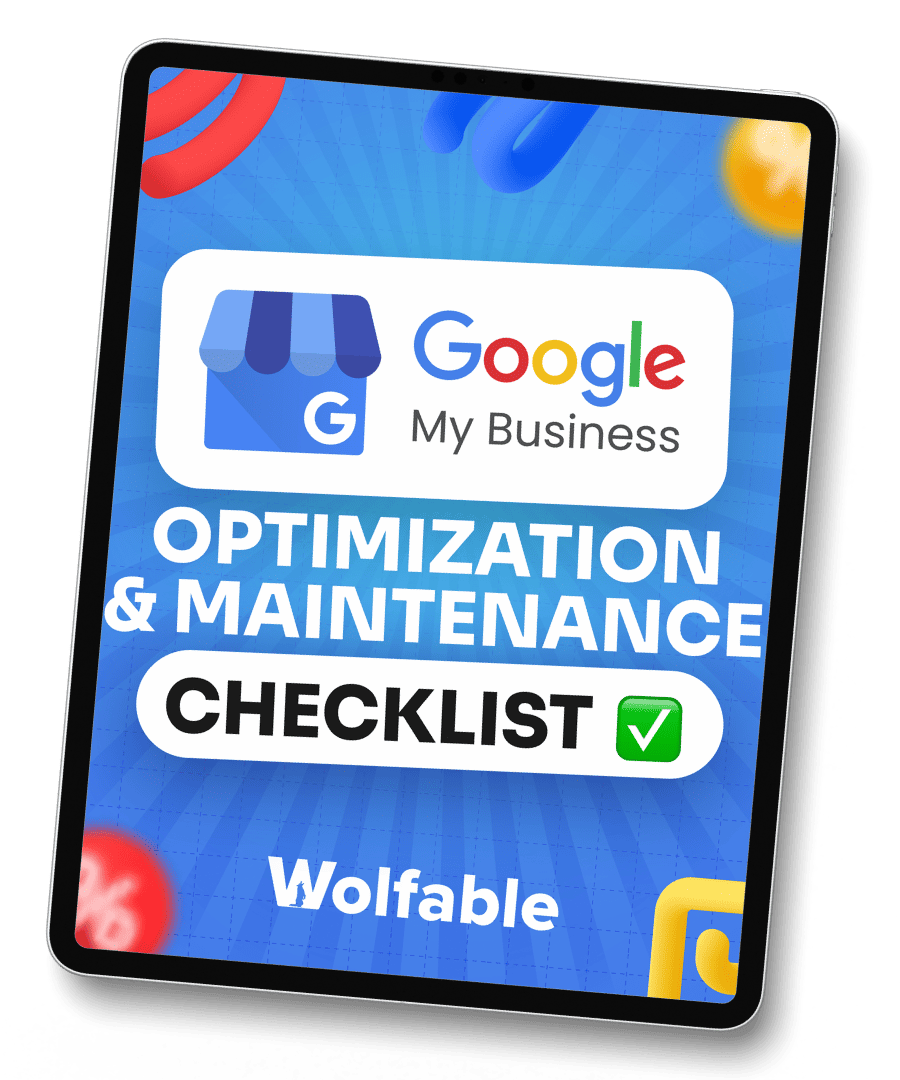Wraps up in 15 Minutes
You've probably heard of SEO (Search Engine Optimization) — the practice of optimizing websites and content to rank higher in search engine results.
But have you heard of GEO (Generative Engine Optimization)?
It's the newest form of search engine optimization, and it's quickly becoming an essential aspect of digital marketing in the era of AI and generative models.
Companies like Google, Microsoft, and Anthropic are investing heavily into the development of these AI models so that they can integrate them into next-generation search engines.
And that’s where the concept of Generative Engine Optimization (GEO) comes into play.
In this complete guide, we’ve explained everything there is to know about GEO so that you can learn to implement smart GEO strategies for your business.
Evolution of Search
Before we talk about Generative Engine Optimization (GEO), it’s important to get clear understanding of how search engines have evolved in the last few decades.
This will help you better understand how GEO works and how you can optimize your business website for it.
SEO (Search Engine Optimization)
This is likely a term you're already familiar with.
SEO refers to the practice of optimizing websites and web pages to rank higher in the search results of traditional search engines like Google, Bing, Yahoo, and others.
The goal of SEO is to increase a website's visibility and organic traffic by making it more discoverable and appealing to a search engine's ranking algorithms. This typically involves techniques like keyword research, on-page optimization, link building, and technical website enhancements.
SGE (Search Generative Experience)
SGE basically leverages the latest generative AI models to generate new content on the fly.
In simple words, SGE refers to the way search engines like Google generate responses to queries using advanced algorithms and possibly artificial intelligence to understand and match the user's intent.
This can involve interpreting the context of queries to provide the most relevant search results.
GEO (Generative Engine Optimization)
Generative search engines are the latest invention of tech giants like Google, and Bing, and others.
Unlike traditional SEO, which involves optimizing websites and content for better visibility and ranking in search engine results.
GEO, on the other hand, is the process of optimizing your website for generative AI models so that generative search engines can effectively index, rank, and surface the content generated by these models in response to user queries.
What is Generative Engine Optimization (GEO) Exactly?
GEO is a practice of optimizing your website and content for the next generation of search engines and content platforms that are powered by generative AI models
It's a new approach that combines elements of traditional SEO with new techniques tailored specifically for generative AI.
Unlike traditional SEO, which focuses on ranking websites in search engine results pages (SERPs), GEO is all about ensuring your content, data, and experiences are optimized for the unique algorithms of generative AI models.
To rank your website on generative search engine results page, you need to ensure that your website content is up-to-date, factual, and trustworthy so that generative AI models can use it as a source of information for generating responses.
Why is GEO Important?
The adoption of generative AI models is rapidly increasing across various industries, from e-commerce and marketing to healthcare and finance.
As a matter of fact, these models are being used for a wide range of applications, including content creation, customer service, data analysis, and more.
As these models become more prevalent, optimizing for them will become increasingly important to expand the visibility of your website in the search results.
Fortunately, GEO can help businesses leverage the power of generative AI, providing a competitive edge in terms of user experience, engagement, and overall brand perception.
How to Do Generative Engine Optimization (GEO) for Your Website?

Now that you fully understand what GEO is, why it’s important, and how it works, let’s talk about how you can optimize your website for generative search engines so that you can expand your website’s visibility in generative search results.
Understand Generative Search Engines
Before you can optimize for generative search engines, you need to understand how they work.
All generative search engines are powered by AI models that are trained on vast amounts of data. However, these AI models can have biases and limitations based on the data they are fed with.
For example, a language model trained on news articles may struggle to understand technical jargon or slang.
There are different types of generative models, each with its own strengths and use cases. Language models like GPT-3 can generate human-like text, while image generators like DALL-E can create visuals from text descriptions. Audio models, on the other hand, can generate realistic speech or music.
Popular examples of generative AI models include GPT-3 (text), DALL-E (images), and Stable Diffusion (images and videos). Understanding all these AI models can help you to tailor your content and optimization strategies accordingly.
Optimize Content for Generative Search Engines
Creating high-quality, engaging, and informative content is crucial for GEO. However, you'll also need to optimize that content to ensure it's easily understood by generative AI models.
For starters, structuring your content in a clear and concise manner can help generative models better understand and process it.
Additionally, make sure that you’re using clear headings, short paragraphs, and relevant keywords throughout your content. And most importantly, you should not neglect metadata, alt text, and other on-page elements.
When you take care of these elements in your website content, it becomes much easier for generative AI models to comprehend and accurately represent your information.
As a result, this will increase the likelihood of your website content to be surfaced and summarized when searchers ask relevant questions related to the subjects you cover.
Leverage Multimodal Content
Nowadays, users love visual content more than they do text content. They want a rich, multimodal experience that combines text, images, video, and audio.
Generative AI models are becoming increasingly adept at processing and generating different types of content from websites.
So, if you want to impress and attract these users, you have no choice but incorporate such multimodal elements into your website and make your content more accessible to the generative AI models.
For example, you can use descriptive alt text for images, transcripts for videos, and structured data for audio files.
To go one step further, you can even consider creating dedicated multimedia content specifically tailored for generative AI models.
Implement Schema Markup
For the uninitiated, Schema Markup is basically a type of structured data that is widely used by various search engines because it helps them better understand the content on any website.
Put simply, it's basically a set of tags that provide context and meaning to different elements on your pages.
For GEO, schema markup can be incredibly valuable. There are various schema markup types, such as Article, Product, Event, and Recipe, each designed to help generative models interpret specific types of content.
Implementing schema markup on your website may seem difficult, but there are many tools and resources available to help you generate and validate your markup.
In fact, if you implement schema markup correctly, it can drastically improve your search visibility, provide richer search results, and enhance the overall user experience.
Use Generative AI Models to Your Advantage
Last but not least, you can also consider using generative AI models to improve your website visibility in the search results.
In fact, these models can assist you in various tasks, such as content creation, optimization, and analysis.
For example, you could use a language model like GPT-4 to generate drafts or outlines for your website's content, which you can then refine and optimize. Or, you could use an image generator like DALL-E to create visuals based on your text prompts, saving you time and resources.
Additionally, generative AI models can help you analyze and optimize your existing content. To do this, you simply need to feed your website's content into these models, and in return, these models can help you identify areas for improvement such as pages that lack sufficient information or sections that could benefit from multimodal elements.
All in all, using generative AI models not only saves you time and effort but also ensures that your content is optimized for these models from the very beginning.
However, it's important to remember that these models are not perfect and should be used as assistants rather than replacements for human expertise.
Key Differences Between GEO and SEO Techniques
While traditional Search Engine Optimization (SEO) has been a cornerstone of digital marketing for decades, the rise of generative AI models has introduced a new era of optimization — Generative Engine Optimization (GEO).
To help you understand the key differences between these two approaches, we've created a handy table that breaks down the most important aspects side by side.
As you can see, while GEO and SEO share some similarities in their goals of improving website visibility and user experience, they differ significantly in their approaches and tactics.
GEO is tailored specifically for the new era of generative AI models, while SEO remains rooted in traditional search engine algorithms and user behavior.
It's important to note that GEO and SEO are not mutually exclusive – in fact, they can complement each other. When you incorporate elements of both optimization techniques, you can ensure that your website is optimized for current and future search engine technologies.
Optimizing for ChatGPT and Gemini
Optimizing your content for AI models like ChatGPT and Gemini can significantly boost your online presence. These models are designed to understand and generate human-like text, making them powerful tools for content creation, customer support, and more.
Here’s how you can optimize your content for these AI models:
- Use Clear and Simple Language: Both ChatGPT and Gemini thrive on clarity. Therefore, you should use simple, straightforward language so that the AI understands your content accurately and generates relevant responses.
- Incorporate Relevant Keywords: Just like traditional SEO, AI models benefit from well-placed keywords. This is why you need to identify the main topics your content covers and naturally include those keywords. This helps the AI recognize the focus of your content and improves its ability to provide useful information.
- Provide Context: AI models need context to generate accurate responses. So, when you’re writing any form of content, make sure to include enough background information. This could mean explaining a concept briefly before diving into specifics or summarizing previous points before introducing new ones.
- Be Specific and Concise: Specificity helps the AI generate more precise responses. Instead of writing vague statements, provide detailed information. Conciseness is also crucial; overly long or redundant content can dilute the main message and confuse the AI.
- Engage with Questions and Answers : AI models like ChatGPT and Gemini are designed to handle queries efficiently. Structuring your content in a Q&A format can enhance the AI's ability to provide accurate and helpful responses. This format mimics natural conversation and is particularly effective for troubleshooting and FAQs.
Implementing these tips can help you create content that not only engages your audience but also works seamlessly with advanced AI models like ChatGPT and Gemini.
This optimization can lead to better user experiences, improved customer interactions, and higher visibility for your content online.
Strategies for Success: Optimizing for GEO
Generative Engine Optimization (GEO) is all about making your content more effective and engaging with AI-driven tools. When you optimize for generative engines, you can improve the quality of your content and reach a wider audience.
Here are some simple strategies to help you succeed with GEO:
1. Understand Your Audience
Know who you’re creating content for. Use AI tools to analyze audience data and preferences. This helps you tailor your content to meet their needs and interests, making it more engaging and relevant.
2. Leverage AI Writing Tools
Use AI tools like ChatGPT to help generate content ideas, drafts, and even full articles. These tools can speed up the writing process and ensure your content is well-structured and coherent. However, make sure that you verify the information and content provided by these tools.
3. Optimize for Keywords
Just like with traditional SEO, use relevant keywords that your audience is searching for. Incorporate these keywords naturally into your content to help generative engines understand the main topics and improve searchability.
4. Create High-Quality Content
Focus on creating content that is informative, engaging, and valuable. AI tools can help you refine your content, check for grammar and style issues, and ensure that it meets high-quality standards.
5. Structure your Content Properly
Organize your content with headers, bullet points, and tables. This makes it easier for generative engines to process and generate accurate responses. Besides, structuring your content properly also enhances readability for your audience.
6. Include Visuals
To improve your chances of success, consider enhancing your content with images, videos, and infographics. AI tools can help you create and optimize multimedia elements so that your content looks more engaging and visually appealing.
7. Analyze and Improve
Finally, leverage analytics tools to monitor the performance of your content. Specifically, we recommend monitoring key metrics like engagement, click-through rates, and conversion rates. Then, use this data to continually improve and optimize your content strategy.
8. Cite Sources
When optimizing for generative engines, it's important to use information from trusted and reliable sources. Therefore, we recommend looking for research, reports, and data from well-known organizations, companies, or experts in the field. Citing these sources in your content lends credibility and shows that your information is accurate and up-to-date.
9. Statistics Addition
Apart from the trusted sources, including relevant statistics in your content can also make your content more compelling and authoritative. However, when you include any statistics, you have to make sure that you only include relevant and interesting numbers, percentages, or projections from reputable sources that support your points.
10. Statistics Addition
Using quotes from industry leaders or experts can strengthen your content and lend additional weight to your arguments. But this can only help if you include insightful or thought-provoking quotes that reinforce your main points or provide valuable perspectives.
11. Easy to Understand
The key to successful GEO is creating content that is clear, concise, and easy for both humans and generative models to understand. So, when you’re writing content, you must absolutely avoid overly complex language, jargon, or convoluted sentences. Instead, focus on simple, straightforward language and structuring your content in a logical, readable way.
12. Fluency Optimization
Fluency refers to how smoothly and naturally your writing flows. To optimize for fluency, pay attention to proper grammar, sentence structure, and natural language patterns. Generative models respond better to content that reads as if it were written by a skilled human writer.
13. Unique Words
While it's important to use simple language, incorporating some unique or industry-specific words and phrases can be beneficial. These words help generative models better understand the context and nuances of your topic, leading to more accurate and relevant outputs.
14. Technical Terms
If your content covers a technical or specialized topic, you may need to include some technical terms or jargon. However, it’s important to strike a balance – use these terms when necessary, but also provide clear explanations or definitions to ensure your content remains accessible to a broader audience.
15. Authoritative Content
Ultimately, the key to successful GEO is creating high-quality, authoritative content that establishes you as a trusted source in your field. This means combining expert knowledge, well-researched insights, and optimized content that resonates with both humans and generative models alike.
This approach can help you stand out from your competitors and achieve greater success with your content marketing efforts.
Future of Generative Engine Optimization (GEO)
While Generative Engine Optimization (GEO) may seem like a revolution that’s going to last for a long time, it's just the beginning of a transformative shift in the way we create, optimize, and consume digital content.
As generative AI models continue to evolve and become more sophisticated, the role of GEO in shaping the future of online experiences will only grow more significant.
Moreover, the rise of multimodal generative AI models means that we could see a future where content is not just limited to text and images but also incorporates seamlessly integrated audio, video, and even interactive elements.
Overall, the future of Generative Engine Optimization (GEO) is undoubtedly exciting. It represents a paradigm shift in how we interact with digital content and opens up a world of possibilities for creating more personalized, immersive, and accessible online experiences.
And as time goes on, those who embrace and master GEO will be well-positioned to stay ahead of the competition.
Conclusion
As we conclude, it's clear that Generative Engine Optimization (GEO) is reshaping the way we approach content creation and SEO.
This innovative strategy uses AI to help us produce content that is not only relevant and engaging but also deeply tailored to our audience's needs.
So, if you’re looking to enhance your website's visibility and engage with your target audience more effectively, GEO is your next step. And if you’re ready to embrace GEO and transform your digital marketing strategy, consider partnering with Wolfable.
We, at Wolfable, specialize in GEO and have helped several clients achieve outstanding results in a crowded digital space.
The future of digital marketing is bright with possibilities, and with Wolfable, you're always one step ahead.









